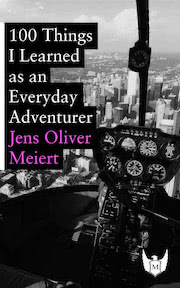Blog (2)
Website Optimization Measures, Part XXII
Web design is a process, running our own websites is awesome, and together it means there’s always something to tweak and improve and optimize. Select things I’ve done over the last few months.
On the Well Astonishing Verdicts on Social Media
We may speak anything from 470,000,000 to 860,000,000 words in our lifetime. The tiniest fraction may be too much.
Performance and Stay Questions in 1:1s
On a set of questions that are useful to ask every few weeks, for close alignment and connection, as well as well-being.
My Web Development Wishlist 2024
Respect, UX before DX, quality output that starts with conformance, running one’s own website, and adding as much as necessary, but as little as possible to web standards—five wishes to benefit our field, our users, and us as professionals.
Stop Closing Void Elements
Some developers believe in closing all HTML elements. Some have to close all HTML elements. Others don’t believe in doing so, or aren’t forced either way. In Upgrade Your HTML IV, I wrote a little about closing void elements.
2023
My professional and personal highlights from the last year. (Happy 2024!)
Incident, Mitigate, Learn
We can’t just pick two.
“HTML First” Is Not HTML First
On what is and what isn’t “HTML First.” (It’s not just a hunch: It should start with HTML.)
Something to Know About Defensiveness
“The first rule of effective debate, argument, or heated conversation is to never, ever, get defensive.” On what we label as defensiveness, and a story that appears more complete and empathetic.
26 Other Web Development Terms You May Not Have Heard Of
From ActionScript (psst) to linearizability to the Z shell.
Why Online Communication Is So Not-Great
Why is online communication so, meh? An approach that considers context, training, and world views, for a much more complicated topic.
The 9 HTML Elements That Have an Attribute of the Same Name, or: The 9 Attributes That Have an Element of the Same Name
There are nine HTML elements that have an attribute of the same name. You’ll never guess what follows next.
Letter and Spirit of Web Development
In the realm of law, there is the notion of letter and spirit of a law. It seems we could benefit from letter and spirit in web development, too.
14 Tips for Becoming an Indie Author
After a few books with a publisher and a few more as an independent author, some tips and thoughts on how to publish your own books (if that’s what you’re excited about doing, too). From starting with ebooks to not writing overly much to not using AI tools—all sorts of advice you would or wouldn’t expect to get.
Website Optimization Measures, Part XXI
Who hasn’t had enough of style sheet reviews, editor performance optimizations, ad removals, CTA revisions, pseudo-class refactorings, blocked AI crawlers, custom search engines, social graphics, or server log configs.
2023: 0 of the Global Top 100 Websites Use Valid HTML
The latest analysis of HTML and CSS conformance of the most popular websites. The situation is only going to get better once we set higher expectations for the code we ship.
Existence and Experience
How can something-exists experience itself?
On the Uniting Power of a Commitment to HTML Conformance
HTML is the language of the Web, there’s a quality standard—expectation—for HTML, but we don’t make use of it, yet if we would, it would come with several advantages, one of them being that it could unite and propel us to master more important challenges, which would be good again for our field and the Web.
What Happened to Separation of Concerns in Frontend Development
On a story that began around 2010, and in which web standards make separation of concerns easier—and frameworks make it harder.
The Most Minimal Valid HTML Document
—isn’t that exciting, isn’t even new, but can use repeating in times of conformance neglect and AI-assisted coding.
Valve, Counter-Strike, macOS, and How Not to Relaunch Software
Yesterday, on September 27, Valve released Counter-Strike 2, replacing the game’s predecessor, Counter-Strike: Global Offensive (CS:GO) on Valve’s Steam platform. But.
The Good Things About All the Problems
On things we cannot meaningfully discuss, and the sequel to The Problems With All the Good Things that may never be.
Website Optimization Measures, Part XX
Definition issues. Aging content. Debugging. Social graphics. CTAs. DNS entries. SVGs. Filler words. PHP. There’s always something worth tending to.
Sustainability and Tech and Us
In tech, we’re exceptionally bad at sustainability. While those of us who focus on sustainability, performance, as well as code minimalism are already contributing to improvements, we can do more. A few thoughts.
The 10ish Tools I Install on Every New Mac I Get
Are there going to be surprises.
Categories
- Adventure (29)
- Art and Design (65)
- Engineering Management (21)
- Everything Else (137)
- Philosophy (66)
- Web Development (347)
Archives
By Year
Blogroll
- Barker, Michelle
- bij de Weg, Henk
- Comeau, Josh W.
- Evans, Julia
- Fung, Kaiser
- Heilmann, Christian
- Krugman, Paul
- Lawson, Nolan
- Leatherman, Zach
- Merchant, Amit
- Meyer, Eric A.
- O’Hara, Scott
- Ockerman, Stephanie
- Orosz, Gergely
- Osmani, Addy
- Roselli, Adrian
- Schneier, Bruce
- Shadeed, Ahmad
- Sterling, Bruce
- Suzanne, Miriam Eric
- Van Damme, Bramus
- Verou, Lea

Find adventure anywhere? Try 100 Things I Learned as an Everyday Adventurer (2013). During my time in the States I started trying everything. Everything. Then I noticed that wasn’t only fun, it was also useful. Available at Amazon, Apple Books, Kobo, Google Play Books, and Leanpub.

Curious about traveling the world—and about a personal perspective? Try Journey of J. (2015). A freestyle documentary of 557 days of travel across 6 continents and 48 countries. Available at Amazon.
